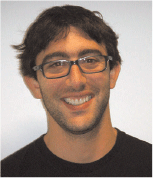Surface monitoring using radar satellite images to measure ground deformation: applied for coal seam gas production areas to comply with regulatory requirements
B. Payàs A , R. Morris B , A. Arnaud A , D. Albiol A and J. Duro AA Altamira Information.
B Origin Energy.
The APPEA Journal 52(2) 658-658 https://doi.org/10.1071/AJ11072
Published: 2012
Abstract
This extended abstract introduces radar satellite reservoir monitoring technology (InSAR) and its main applications for monitoring CSG production areas and its surroundings. InSAR technology detects ground motion with millimetric precision: measurements are taken remotely from space. It is a highly efficient tool for ground-motion measurement, even in large and remote areas, where land-based measurement techniques are inconvenient and costly.
Altamira Information has developed an advanced differential interferometric chain (Stable Point Network, SPN) that can process radar images, achieving millimetric measurements. Ground-motion monitoring with radar images is an efficient technology to comply with regulatory requirements, arising from CSG activities: regulatory requirements specify the obligation for CSG operators to monitor subsidence starting with a baseline then continue with ongoing monitoring to quantify deformation at the land surface within the proponent’s tenures.
InSAR is the only technology able to measure ground deformation in the past since archive radar images are available. These measurements in the past allow establishing baselines to determine vulnerable zones affected by subsidence (before CSG production) or subsidence induced by CSG or other activities.
Monitoring requirements for the present and future can be covered with high-resolution satellites—which can be programmed—with precise measurement results (up to 1 mm). Case studies are presented from historical data processed from the Surat and southern Bowen Basin CSG developments; these cases include the investigation of both CSG and non-CSG induced surface deformations.

Blanca Payàs graduated in geography from the Universitat de Barcelona and later obtained a master’s degree (remote sensing) from the Dundee University (UK). She also received specific training in management of geological hazards (University of Geneva, Switzerland). She joined Altamira Information in 2009 as strategy director and is responsible for the international development of the company. |

Ryan Morris has worked in Australia, Europe, and southern Africa as a consultant and as a staff hydrogeologist. His experience includes groundwater resource management, impact assessment, supply, and monitoring. He has undertaken projects to assess the availability and sustainability of groundwater resources, assessed potential impacts associated with mining and infrastructure developments, and provided guidance (to clients) about monitoring and managing groundwater resource and the infrastructure. He is a senior hydrogeologist at Origin Energy, working mainly in the emergent CSG industry in Queensland. He is responsible for designing and implementing groundwater monitoring, aquifer injection, and subsidence monitoring programs of the Australia Pacific LNG project. He is a registered profession geoscientist (hydrogeologist) and is a recipient of the Australian Institute of Geoscientists WH Cundy Award. |

Alain Arnaud, CEO of Altamira Information, obtained his PhD (computer science) from École Nationale Supérieure d’Electronique, Electrotechnique, Informatique et Hydraulique de Toulouse (ENSEEIHT) (France) in 1997. Prior to this, he received a degree in engineering from the École Polytechnique (X89) and a master’s degree from the Institut National Polytechnique de Toulouse (INPT) (France). He has 17 years of experience in the remote sensing field and is specialised in SAR interferometry. He served as technical officer for SAR projects at both the French Space Agency (CNES) and the European Space Agency (ESA). In 2000, he founded his own company, Altamira Information, where he created a team of InSAR and PSI experts. He has developed ground-motion detection and cartographic products for clients from several areas of interest: infrastructure, mining, oil and gas, insurance, environment, and natural hazards, as well as space and research. Altamira Information is also responsible for developing and maintaining the Stable Point Network PSI chain, which belongs to the company. |

Following his studies at the Escuela Técnica Superior d’Ingeniería de Telecomunicaciones of Barcelona, David joined Altamira information’s research and development department in 2007 to continue his work in the area of SAR. As a telecommunications engineer and expert in SAR technology and research of new applications, he is presently working on software development with new types of satellite data. He has participated as project engineer in several international projects. |

Javier Duro has worked at Altamira Information as head of research and development since 2001. He graduated in telecommunications from the Universitat Politècnica de Catalunya (UPC) in 2001, and obtained a doctoral thesis (persistent scatterer interferometry) from the University Marne-La-Vallée in spring 2010. He has more than 10 years of experience in the radar field and has led research activities on the Stable Point Network technique, interferometric artefacts analysis, and other specialised areas of interferometry. During the past years, he has led research projects related to new SAR acquisition modes and new SAR missions. He is one of the foremost authors on advanced SAR interferometry. |
References
Arnaud, A., Adam, N., Hassen, R., Inglada, J., Duro, J., Closa, J., and Eineder, M., 2003—ASAR ERS interferometric phase continuity. International Geoscience and Remote Sensing Symposium, Toulouse, France, 21–25 July, Proceedings.Duro, J., Adam, N., Arnaud, A., Closa, J., and Inglada, J., 2003—High resolution differential interferometry using time series of ERS and ENVISAT SAR data. FRINGE Workshop, Frascati, Italy, 1–5 December, Proceedings.
Granda, J., Arnaud, A., Payas, B., Katsuris, D., and Cooksley, G., 2011—Cost Efficient SAGD Heave Monitoring: New Generation Radar Technology. World Heavy Oil Congress, Edmonton, Canada, 14–17 March, Proceedings.
Massonnet, D., and Feigl, K.L. (1998). Radar interferometry and its application to changes in the Earth’s surface. Reviews of Geopyhsics 36, 441–500.
Queensland Reconstruction Authority, 2012—Floodplain maps (PDF). Accessed 15 February 2012. <http://www.qldreconstruction.org.au/maps/floodplain-areas>.


